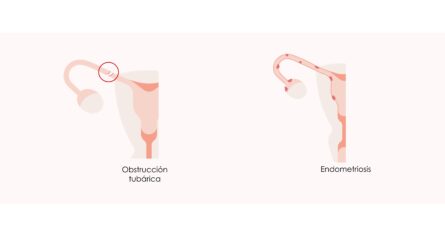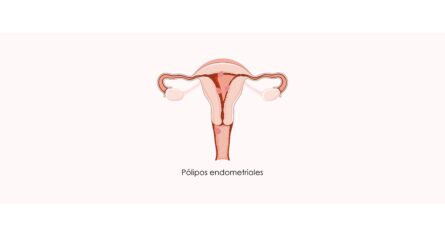Infertility is the inability to conceive and achieve pregnancy. The alteration of the reproductive capacity in women can appear due to a wide variety of causes, depending on which the symptoms will be more or less notable.
There are two main types of infertility:
- Primary sterility: occurs when sterility appears in a woman who has never achieved pregnancy.
- Secondary sterility: occurs when pregnancy is not achieved despite the fact that the woman has previously had one or more children.
Symptoms of female infertility
The symptoms of female infertility can be few or very noticeable, depending on the cause of infertility. If it is female infertility due to endocrine factor, there may be amenorrhea or menstrual irregularities. If it is due to a tubal or uterine factor, there may be discomfort or nonspecific abdominal pain or with intercourse. There are also cases in which the woman does not notice any particular symptoms and is diagnosed with infertility in a gynecological examination.

Among the different causes of infertility of female origin we can highlight the following.
Ovarian function disorders
One of the reasons why pregnancy is not achieved may be changes in the ovulatory cycle. The hypothalamus, the pituitary gland and the ovary are connected by a hormonal axis, which can be altered at any of its connection points:
- Hypothalamic (38% of cases): due to excess or deficiency of weight.
- Pituitary (17% of cases): due to adenomas, prolactinomas...
- Ovarian (45% of cases): due to polycystic ovary (by ultrasound) or due to decreased ovarian reserve or early ovarian failure (due to low AMH levels).
In this way we can find different pictures in ovarian function disorders:
- Anovulation: menses do not occur because there is no follicular development due to alterations at the hypothalamic/pituitary level or at the ovarian level.
- Hidden ovarian failure: this is ovarian failure that prevents ovulation, characteristic of patients with a history of early menopause.
- Insufficient luteal phase: after ovulation, not enough progesterone is produced, which is responsible for promoting the development of the endometrium to allow the implantation of the embryo and thus pregnancy.
- Unruptured luteinized follicle syndrome: the follicle, where the egg is located before ovulation, continues to develop until the luteal phase despite not having released the egg from inside it. Fertilization will not be possible since the egg has not left the ovary.
We arrived at the diagnosis of all these pictures through ultrasound control and hormonal study.
Tubal alterations
When we speak of a tubal factor as a source of female infertility, we refer to the alterations in the Fallopian tubes, area of the female reproductive system where fertilization takes place.

Alterations in tubal patency can be due to infections, endometriosis, malformation, hydrosalpinx, surgical interventions... etc. We diagnosed it by hysterosalpingography.
Uterine and cervical factor
Uterine alterations can be congenital, that is, they can be present from birth, such as uterine septa, bicornuate uterus... They can also appear later due to the formation of polyps, fibroids, cysts or adenomyosis (manifestation of endometriosis). The diagnosis of these pathologies can be made by high-resolution ultrasound and with the help of magnetic resonance imaging.

The neck of the uterus or cervix is the first place that sperm must pass through on their way to the egg. The main causes that can produce sterility are obstructive polyps or fibroids that make fertilization difficult, or alterations in the cervical mucus due to infections or changes in pH.
Genetic factor
There are genetic and chromosomal alterations that can hinder or prevent conception and also affect the normal course of pregnancy.

This can cause miscarriages.
Other causes of infertility
There are other reasons that can cause infertility in women:
- Problems at the vaginal level: vaginismus prevents penetration and ejaculation due to contraction of the perivaginal muscles, thus preventing fertilization.
- Age: The woman at birth has a certain number of eggs. From puberty to menopause, most of them will ovulate and the rest will degenerate on the way to maturation towards ovulation. Therefore, a woman's fertility declines progressively until the complete depletion of the egg supply at menopause.
The current lifestyle has led to a delay in motherhood until biologically advanced ages. Therefore, one of the main causes of current sterility is the age of the woman.
- Immunological sterility: The most common cause is the presence of antisperm antibodies, either by the woman or the man. Antiphospholipid syndrome is also a reason for immunological sterility. The woman creates a state of hypercoagulation in her body that prevents the proper functioning of the placenta and, therefore, leads to abortion.
- Infertility of unknown origin: Despite carrying out numerous tests, no specific anomaly responsible for infertility is detected.





No hay comentarios